 Bubble Nation - 1953 Lincoln XL-500
Bubble Nation - 1953 Lincoln XL-500
'Dream cars' were futuristic fantasies produced by auto stylists to generate foot traffic at auto shows and, sometimes, to test the public's reaction to new ideas or pave the way for future styles. General Motors had been producing dream cars since the 1930s, especially Buick-derived automobiles.
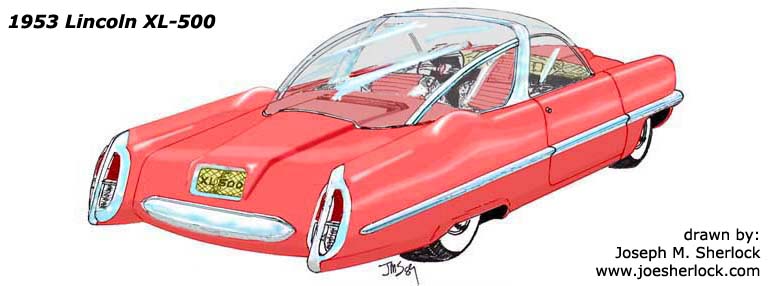
The Lincoln XL-500 dream car was first shown at the Chicago Auto Show. It was built on a stock '53 Lincoln chassis with standard engine and transmission. One of the cars distinctive features was the use of pushbutton selectors for the automatic transmission. They were mounted on the steering wheel hub; this feature became a reality in the 1958 Edsel.
The XL-500 featured a fiberglass body with a lightly tinted Plexiglas bubble canopy roof.
Speaking of fiberglass bodies, if you look back in old issues of Popular Mechanics and Popular Science, you'll find lots of stories predicting the future. These stories always made reference to cars like the XL-500 with their 'miracle' fiberglass bodies. Even though polyester/fiberglass mixes were far more costly than steel, not only on a cost per pound basis but on a cost per unit strength basis, the press and the public fantasized that miracle fiberglass plastic was the wave of the future. The automotive manufacturers just smiled and kept their mouths shut.
Same thing with Plexiglas. Never mind that Plexiglas acrylic was far more expensive than glass, that it scratched very easily and that the forming process for making those domed roofs would thin out the material at the top - the very spot where strength and rigidity was most needed. Sitting in a parked car in the California sun, a Plexiglas canopy would have you fry and die of heat stroke in about ... oh ... four minutes or so. None of this stopped the press from predicting that all cars would soon have transparent Plexiglas bubble roofs for all-around driver visibility.
We were also told that we'd soon live in domed cities with climate control and our second car would be a small commuter helicopter. With a bubble windshield/canopy, of course. Our homes would have central courtyards covered with a transparent plastic hemisphere to keep the weather out, help the plants grow and allow our robot servants to recharge their solar batteries. Clear plastic bubbles would permeate our lives. We'd be part of a bubble nation living an a bubble-based economy.
The Doming of America reached its peak with the introduction of the Cone of Silence on 'Get Smart' in 1965. The bubble economy collapsed shortly thereafter.
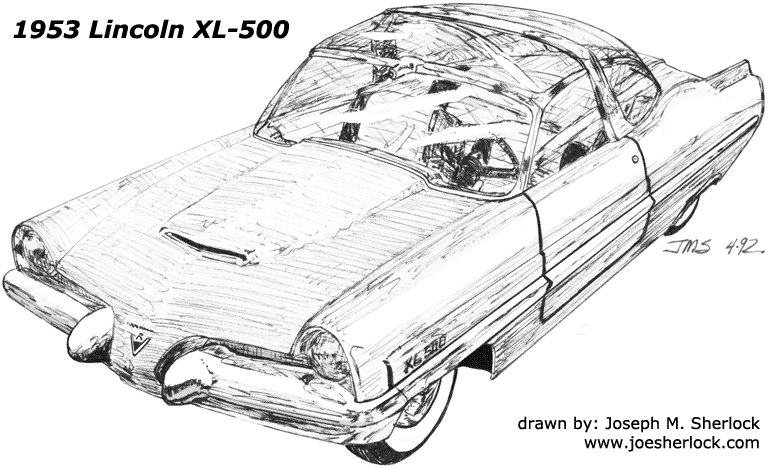
Returning to the bubblicious 1953 XL-500, the car featured a radio telephone, an electronic calendar and a power-operated hood and decklid. The showcar was painted a bright scarlet red and had a red and white leather interior. At first, the car was presented by the Lincoln Mercury Division with no Lincoln badges but it was later publicized as a Lincoln. With its striking exterior color and futuristic styling, the car brought foot traffic to the Lincoln Mercury stand at various auto shows and probably helped sell a few Capris and Montereys.
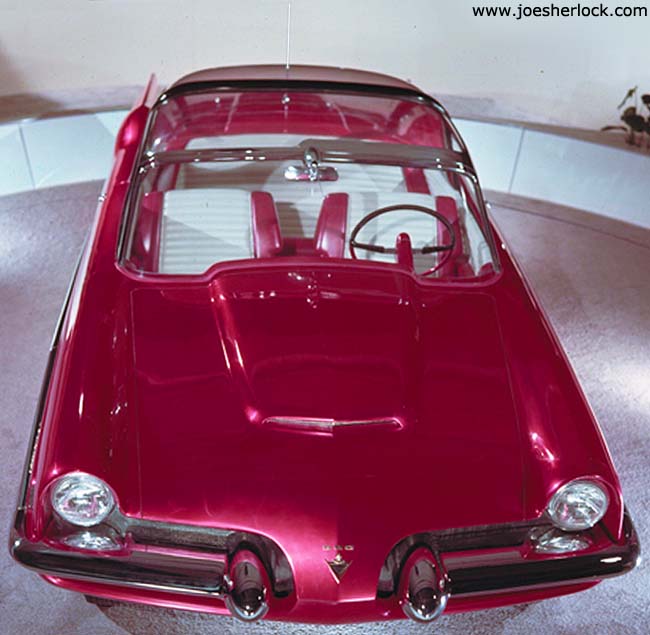
Well, it's now almost fifty-five years later and we continue to be bubbleless. We still don't have anything on the road like the XL-500. No vehicles with clear bubble canopy roofs. No bubble-cockpit personal helicopters for commuting. No domed, climate controlled cities either. No plastic hemispheres over courtyards where robotic slaves could gather.
But that 'radio telephone' thing did come to pass; they now call it 'cellular' and, every day, you can see it in use on the road - by contractors who are hogging the passing lane in their trucks while they concentrate on barking orders to employees and by salesman who are weaving all over the road while trying to set up their next appointment or texting.
Guess that's progress, folks. (posted 8/24/07)
|
Remember When: 1953
|
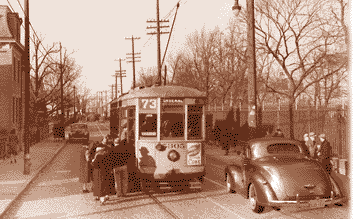 In 1953, Ike was sworn in as president of the U.S. Earl Warren became Chief Justice of the Supreme Court. Elizabeth II was crowned Queen of England. In 1953, Ike was sworn in as president of the U.S. Earl Warren became Chief Justice of the Supreme Court. Elizabeth II was crowned Queen of England.
Edmund Hillary and Tensing Norgay were the first men to climb Mount Everest.
Irish Coffee made its American debut; the first issue of Playboy magazine first appeared in '53.
<Other new products included the Chevrolet Corvette, a new overhead-valve V8 engine for Buick, thermostatically-controlled electric fry pans and the antibiotic, tetracycline. DNA is discovered.
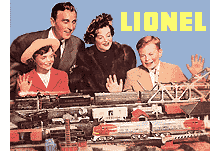 Sales of toy trains peaked in 1953 - Lionel reached $32.9 million in sales; by 1955, sales were down 33%. Sales of toy trains peaked in 1953 - Lionel reached $32.9 million in sales; by 1955, sales were down 33%.
The price of hardcover novels rose over the $3.00 mark. New words included 'drag strip', 'cookout', 'egghead', 'split-level house' and 'count-down'.
A gallon of gasoline cost 25¢ or less, depending on where you lived but the minimum wage was only 75¢ per hour. Median U.S. family income was just over $4,200 per year. Kaiser and Jeep merged in Spring 1953. Pillarless hardtop coupes accounted for almost 15% of car production that year.
Several new TV shows appeared on the very small screen during the '53 season: 'The Danny Thomas Show', 'The Life of Riley', 'The Loretta Young Show', 'Coke Time With Eddie Fisher' (a title which would prove ironic when his drug problems became known years later), 'Name That Tune', 'Superman' and 'Omnibus'.
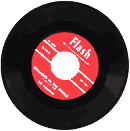 'Ebb Tide' and 'Rags To Riches' were top songs in '53. Record sales consisted of 52% 78-rpm platters, 28% 45-rpms and 19% LP albums. The doo-wop group, The Platters, was founded in 1953. The first CinemaScope films debuted in theaters. 'Ebb Tide' and 'Rags To Riches' were top songs in '53. Record sales consisted of 52% 78-rpm platters, 28% 45-rpms and 19% LP albums. The doo-wop group, The Platters, was founded in 1953. The first CinemaScope films debuted in theaters.
Deaths included playwright Eugene O’Neill, poet Dylan Thomas, singer Hank Williams, Soviet tyrant Joseph Stalin, U.S. Senator Robert Taft, tennis legend Bill Tilton and Olympic athlete Jim Thorpe.
The New York Yankees won the World Series over the Brooklyn Dodgers (4-2) and became the first baseball team to win five consecutive World Series.
|
illustrations copyright 1989, 1992, 2007, 2015 Joseph M. Sherlock
More AutoSketch car drawings can be found here.
Other Pages Of Interest
copyright 2007-20 - Joseph M. Sherlock - All applicable rights reserved
Disclaimer
The facts presented on this website are based on my best guesses and my substantially faulty geezer memory. The opinions expressed herein are strictly those of the author and are protected by the U.S. Constitution. Probably.
Spelling, punctuation and syntax errors are cheerfully repaired when I find them; grudgingly fixed when you do.
If I have slandered any brands of automobiles, either expressly or inadvertently, they're most likely crap cars and deserve it. Automobile manufacturers should be aware that they always have the option of trying to change my mind by providing me with vehicles to test drive.
If I have slandered any people or corporations, either expressly or inadvertently, they should buy me strong drinks (and an expensive meal) and try to prove to me that they're not the jerks I've portrayed them to be. If you're buying, I'm willing to listen.
Don't be shy - try a bribe. It might help.
|